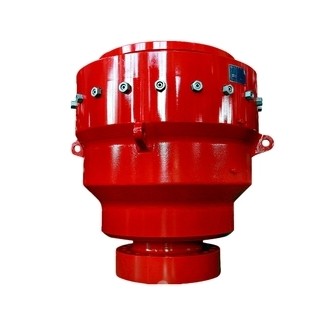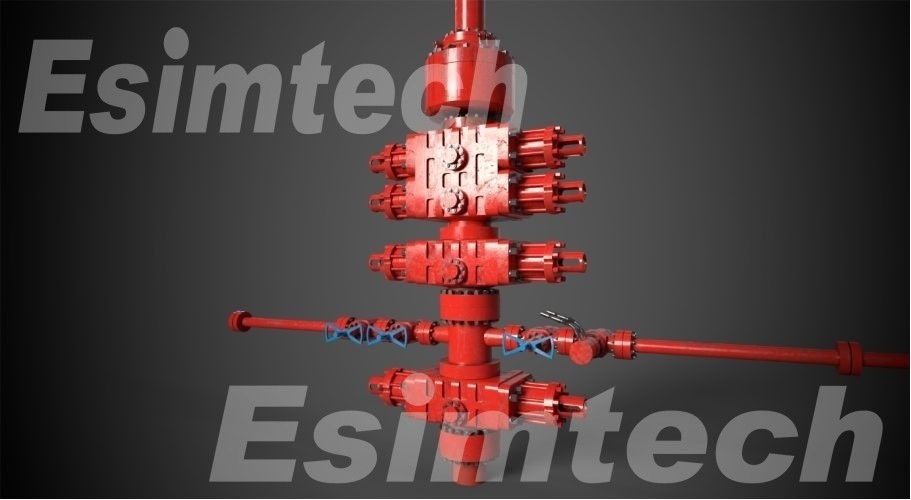The Pivotal Role of Annular Blowout Preventer in Drilling Operations: An Essential Safeguard in Well Control
Drilling operations in the oil and gas industry are intricate endeavors that demand meticulous safety measures and precise control mechanisms. Among these critical safety components, the Annular Blowout Preventer stands as a fundamental safeguard in well control. Its versatile design and pivotal role in preventing uncontrolled fluid releases under high pressure make it an indispensable element in ensuring the safety of personnel and the integrity of drilling operations.
Simply put, an annular blowout preventer(BOP) helps keep the oil well sealed to prevent disastrous blowouts. It operates differently from the ram blowout preventers.

What is an Annular Blowout Preventer?
An Annular Blowout Preventer (BOP) is a pivotal safety device employed in oil and gas drilling operations. It serves as a crucial barrier against uncontrolled fluid releases from a well. This specialized component comprises a circular, rubberized sealing element, often resembling a donut, which can be activated hydraulically to envelop the drill pipe or casing within the wellbore.
During routine operations, the annular BOP remains open, allowing the drill string to move freely. However, in emergencies such as well control issues or blowouts, it swiftly closes, creating a seal to prevent the escape of fluids under high pressure. This flexibility in accommodating various pipe sizes and shapes makes the annular BOP a versatile safety measure.
Part of a well’s blowout preventer stack, the annular BOP is one of several safety mechanisms, working alongside ram BOPs and shear rams to avert potential disasters. Rigorous maintenance, inspections, and adherence to safety protocols are essential to ensure its functionality. With remote-operated capabilities, it enables rapid responses to emergency situations, playing a pivotal role in maintaining safety and preventing environmental and operational hazards during drilling operations.
Annular Blowout Preventer vs RAM Blowout Preventer
An Annular BOP uses a flexible, donut-shaped rubber element that adapts to different pipe sizes. It forms a dynamic seal by closing around the drill pipe or casing, offering versatility in accommodating variable sizes and shapes within the wellbore. Conversely, a Ram BOP employs steel rams that move horizontally or vertically to seal the wellbore, providing a more rigid and direct closure around specific pipe sizes and types.
The main difference lies in their sealing mechanisms: the Annular BOP’s flexibility suits various pipe sizes, while the Ram BOP offers a more precise and robust closure for specific pipes. Annular BOPs excel in their adaptability, enabling them to handle diverse pressure conditions and different pipe dimensions, while Ram BOPs are more tailored to seal off a fixed size.
Both BOP types work in conjunction as part of a safety stack, providing multiple layers of protection to prevent uncontrolled fluid releases, ensuring safety during drilling operations. Their distinct designs offer complementary safety measures for well control, addressing various wellbore conditions encountered during drilling.

Other Ram Blowout Preventer Types
The primary role of a Ram Blowout Preventer (BOP) is to effectively seal the well, thereby averting uncontrolled oil or gas releases. Beyond preventing the unregulated escape of fluids, it serves as a critical safety mechanism to prevent the accumulation of unwanted materials that could lead to system explosions during drilling operations. This pivotal function significantly contributes to the overall safety and well-being of workers present at the drilling site.
Additionally, various other types of Ram BOPs are deployed to serve this fundamental purpose, each with its specific role in maintaining safety and operational stability within the drilling environment.
- Choke Manifolds: A system of pressure sensors that control fluid flow in various directions.
- Blind RAMs: Are designed to close over any portion in the well, whether a pipe is present or not.
- Choke Line Valves: Direct mud to the choke manifold when a kick occurs. They help to control the flow of fluids in the well.
- Kill Line Valves: Act as the backup to the standard drill pipes.

Simulation Used in Annular Blowout Preventer to Master Drilling Operation
By integrating advanced simulation tools, drilling teams can hone their skills in handling annular BOPs in diverse scenarios, allowing for practical, risk-free training experiences. These simulations offer a dynamic environment where individuals can practice responding to various well control situations, enhancing their ability to effectively operate and manage annular BOPs in both routine and emergency conditions.
Drilling Simulation technology facilitates a hands-on learning approach, enabling personnel to develop the necessary expertise to swiftly and accurately deploy these critical safety devices, ensuring optimal well control and bolstering safety standards in drilling operations.
Conclusion
In summary, the Annular Blowout Preventer plays a pivotal role in preventing uncontrolled fluid releases during drilling operations. Unlike Ram BOPs, its adaptable design accommodates various pipe sizes, ensuring versatile safety measures. Simulation technology has emerged as a valuable training tool, enabling drilling teams to master the operation of Annular BOPs in different scenarios. Through simulations, personnel can refine their skills, ensuring efficient deployment of these critical safety devices for optimal well control and heightened safety standards in drilling operations.
